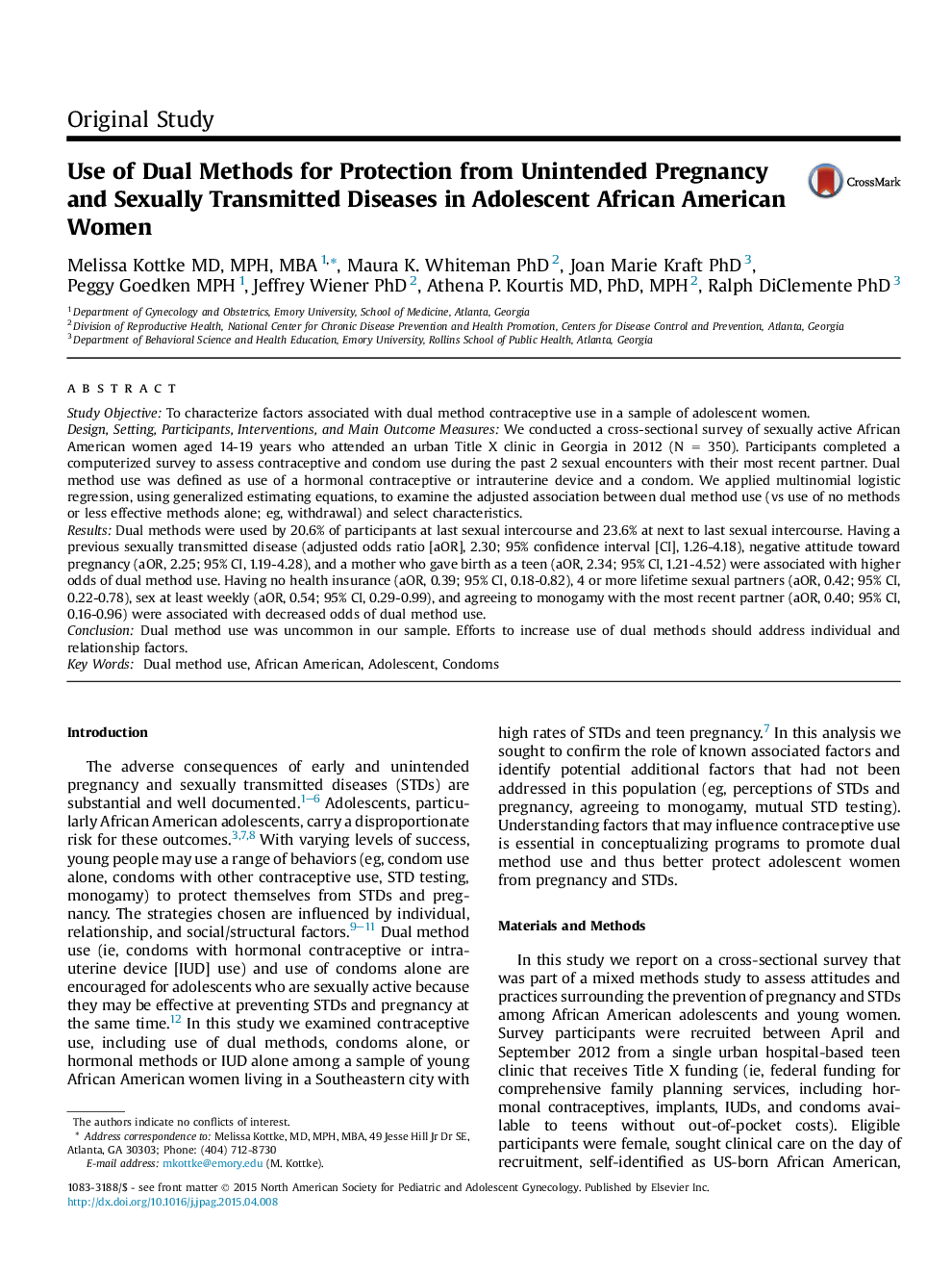| Article ID | Journal | Published Year | Pages | File Type |
|---|---|---|---|---|
| 3962743 | Journal of Pediatric and Adolescent Gynecology | 2015 | 6 Pages |
Study ObjectiveTo characterize factors associated with dual method contraceptive use in a sample of adolescent women.Design, Setting, Participants, Interventions, and Main Outcome MeasuresWe conducted a cross-sectional survey of sexually active African American women aged 14-19 years who attended an urban Title X clinic in Georgia in 2012 (N = 350). Participants completed a computerized survey to assess contraceptive and condom use during the past 2 sexual encounters with their most recent partner. Dual method use was defined as use of a hormonal contraceptive or intrauterine device and a condom. We applied multinomial logistic regression, using generalized estimating equations, to examine the adjusted association between dual method use (vs use of no methods or less effective methods alone; eg, withdrawal) and select characteristics.ResultsDual methods were used by 20.6% of participants at last sexual intercourse and 23.6% at next to last sexual intercourse. Having a previous sexually transmitted disease (adjusted odds ratio [aOR], 2.30; 95% confidence interval [CI], 1.26-4.18), negative attitude toward pregnancy (aOR, 2.25; 95% CI, 1.19-4.28), and a mother who gave birth as a teen (aOR, 2.34; 95% CI, 1.21-4.52) were associated with higher odds of dual method use. Having no health insurance (aOR, 0.39; 95% CI, 0.18-0.82), 4 or more lifetime sexual partners (aOR, 0.42; 95% CI, 0.22-0.78), sex at least weekly (aOR, 0.54; 95% CI, 0.29-0.99), and agreeing to monogamy with the most recent partner (aOR, 0.40; 95% CI, 0.16-0.96) were associated with decreased odds of dual method use.ConclusionDual method use was uncommon in our sample. Efforts to increase use of dual methods should address individual and relationship factors.
